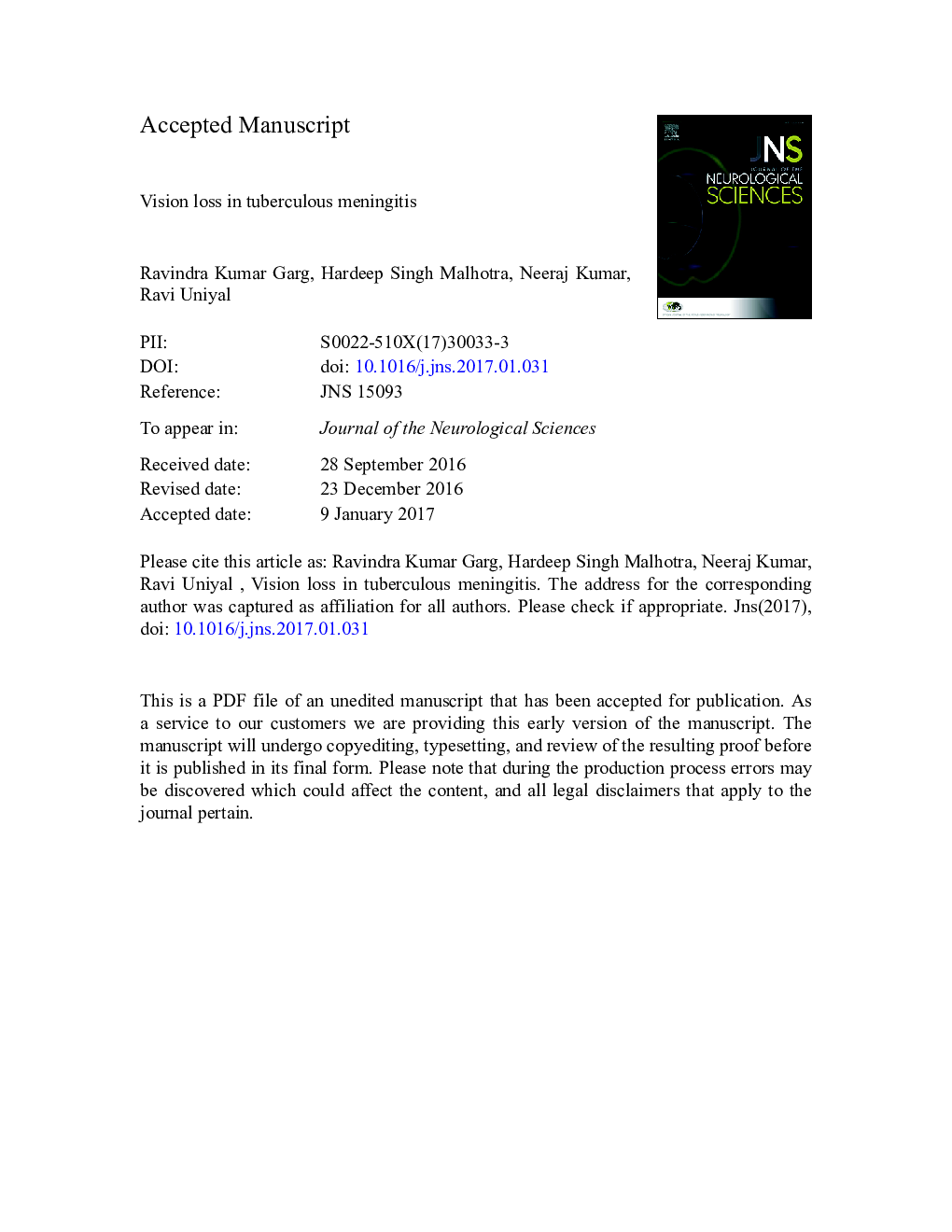| Article ID | Journal | Published Year | Pages | File Type |
|---|---|---|---|---|
| 5503175 | Journal of the Neurological Sciences | 2017 | 27 Pages |
Abstract
Vision loss is a disabling complication of tuberculous meningitis. Approximately, 15% of survivors are either completely or partially blind. All structures of the visual pathway may be affected in tuberculous meningitis. Optic nerve and optic chiasma are most frequently and dominantly affected. Thick-gelatinous exudates lying over the base of brain, are the pathological hallmark of tuberculous meningitis and are responsible for almost all of its major complications, including vision loss. Strangulation of optic nerves and optic chiasma by the exudates, compression over optic chiasma by the dilated third ventricle, raised intracranial pressure, endarteritis, shunt failure, bacterial invasion of optic nerves and drug-induced optic nerve damage are important reasons that are considered responsible for vision loss. Prompt antituberculosis treatment is the best management option available. Immunomodulatory drugs and cerebrospinal fluid diversion procedures are of limited help. Early recognition and treatment of tuberculous meningitis is the only way forward to tackle this problem.
Keywords
Related Topics
Life Sciences
Biochemistry, Genetics and Molecular Biology
Ageing
Authors
Ravindra Kumar Garg, Hardeep Singh Malhotra, Neeraj Kumar, Ravi Uniyal,
